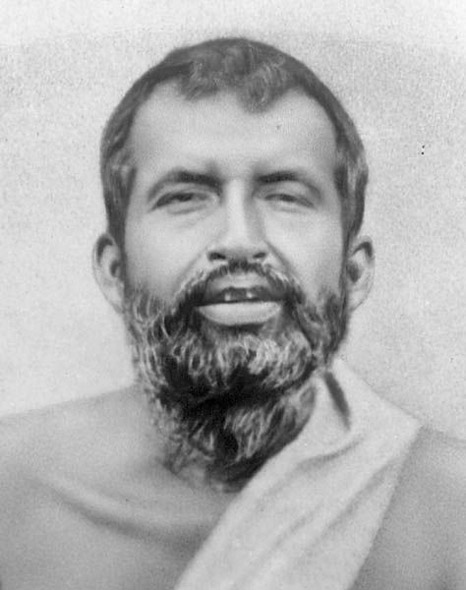
“I bring to Europe – who does not know it – the fruit of a new autumn, a new message of the Soul, the symphony of India which has the name of Ramakrishna. {...] The man whose image I invoke here was the culmination of two thousand years of the inner life of a population of three hundred millions. Since his death forty years ago he has been a driving force behind present day India. He was neither a hero of action, like Gandhi, not a genius of art or thought like Goethe or Tagore, he was a little Brahmin peasant in Bengal, whose external life took place within a limited framework, without remarkable incidents, away from the political and social activity of his time. But his interior life encompasses a multitude of men and gods. [...] Very little goes back to the source. The little Bengali peasant, by listening to his heart, has rediscovered the inner Sea. And he has wedded it [...]”
Romain Rolland The Life of Ramakrishna 1929
Ramakrishna (18 February 1836 – 16 August 1886) was born in Kamarpukur, a little village in the province of Bengal, in northeast India.
At the age of twenty, he was entrusted with performing religious rites at a newly constructed temple dedicated to the Goddess Kali, in Calcutta, the provincial capital. This marked the beginning of a long series of religious experiences – some disconcerting, for his body and his mind, for himself or those near him. These experiences confirmed what he had already sensed long ago during his childhood: there is only one reality, and that reality is divine.
Around 1861, several master sages who were experts in these matters recognised that Ramakrishna had received the Supreme Ecstasy. This recognition changed nothing regarding the simplicity of Ramakrishna’s life: he continued his service at the temple in Calcutta. He also continued his search for true spiritual knowledge, and with this goal in mind practiced the principal approaches set out in Hinduism, as well as Islam and Christianity.
In 1872, Sarada Devi joined Ramakrishna, whom she had already married as a child (in accordance with longstanding tradition). Their love for each other was unfailing, and nevertheless remained chaste.
Little by little, Ramakrishna’s reputation spread beyond his native village, and beyond the compound of the Kali temple, and soon people came from all over India to see him and converse with him.



